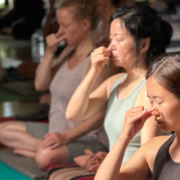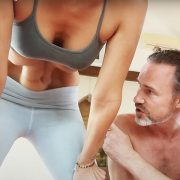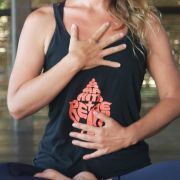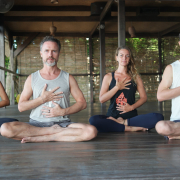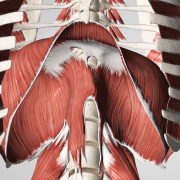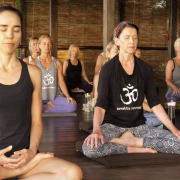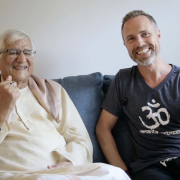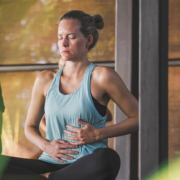 https://samahitaretreat.com/wp-content/uploads/2024/02/basic-breathwork.webp
600
798
Dr. Paul Dallaghan
http://samahitaretreat.com/wp-content/uploads/2024/01/samahita-logo-v2.svg
Dr. Paul Dallaghan2024-02-28 20:34:422024-02-28 20:35:53Navigate the World of Breathing
https://samahitaretreat.com/wp-content/uploads/2024/02/basic-breathwork.webp
600
798
Dr. Paul Dallaghan
http://samahitaretreat.com/wp-content/uploads/2024/01/samahita-logo-v2.svg
Dr. Paul Dallaghan2024-02-28 20:34:422024-02-28 20:35:53Navigate the World of BreathingBreathwork in Times of Stress
Though you breathe all day and night you have no idea if the quality and integrity of your functional breathing is helping or hindering you. I found this so fascinating it has become my primary interest in terms of practice and study for the past 25 years.
In order to breathe a vast respiratory apparatus and neuronal programming is required (1). It is deeply wired. However, based on changes to our lifestyle as we grow and eventually age both this respiratory set of muscles and organs, as well as the integrity of nervous impulses that direct it, typically reduce in efficiency. This affects our physical health as well as our response to that state of health and other stimuli impacting us each day. Though the breath is by and large an involuntary process, it has the unique capacity for conscious intervention whereby we can manipulate the motion of breathing. Done well, with understanding, it can change our entire physiology and how we feel mentally. That is powerful.
On a positive note, it is never too late to implement lifestyle changes to improve both your physical and mental well-being. This includes practice with the breath. A study published last week on middle-aged women who sustained lifestyle changes, especially in terms of diet and exercise, reduced stroke risk by 25% and ischemic stroke by 36% (2). Statistics or not, those are huge benefits. So use this article and video to trigger a simple but life benefitting daily breathwork routine practice.
“Breathwork”, in want of an official definition that I now offer here, then becomes “the regulated activities, consciously engaged in, to exercise and optimize the organs of respiration and brainstem nervous impulses that control breathing, with an outcome of improved respiration across a 24-hour period” (Dallaghan).
Breathwork can then be further broken down to:
- Times of regular training
- Times of stress (the subject matter of this article)
- Times of anxiety
- Advanced practice: Pranayama, the art of the breath
Regular training should help one to manage ongoing stress and handle anxiety when it arises. The breathwork practice can then grow into more advanced techniques that the field of pranayama covers. Too often amateur recommendations are made to do a “nostril breath” or a “box breath”, and so on. Though sounding good they are minimally effective in and of themselves. It is the decrease in efficiency of one’s respiratory function over time that leads most people into trouble with stress and anxiety and later being more susceptible to respiratory illness. The system is just not robust enough. No superficial “nostril breathing” is going to sort that. Rather dedicated, regular breathwork practice, ideally daily, can transform your respiration efficiency and the physiological effects that trigger from that.
If you are approaching the area of breathwork now for the first time and feel stressed, or even anxious, then the regular training path is not yet the mode to go. Rather, engaging in certain simple exercises that are known to aid the stress burden is a more beneficial immediate strategy (3), and thus why I offer this now. This “Quadrangular Breath”, a simple and highly effective practice, can be done in 10 minutes.
Follow the Practice
As an analogy to help understand that, the stress burden experienced psychologically and affecting all bodily processes, is like carrying heavy luggage for a long time without knowing how to take a break and put them down. Breathwork for stress, now, is akin to getting relief from your luggage carrying load now. Breathwork training, over the longer term enhances your respiratory fitness and upregulates your stress resilience. Breathwork for times of anxiety is similar to having a crisis with your luggage and being able to catch it and not lose it. Pranayama training takes breathwork into a different realm, similar to knowing how to continue to travel and have your luggage carried along with you – we’re all on the same train, but I have learned how to sit down, relax and store my luggage while I see others struggling with their bags. You can change this now!
To get the most out of this article follow the guidance in the related video. It gives you a simple strategy of an opening set-up, 4 levels of building a regulated breath, followed by a concluding moment. The detail and explanation behind the breath and these techniques are more technical and dealt with in a separate article. The emphasis now is to follow and practice. Make it regular and you will understand through direct experience.
Opening set-up:
- Establish how you will sit. Can be crossed-leg or on a chair. Avoid letting the back round or slightly collapse, as this will reduce the efficiency of the overall breathing process.
- Once comfortably settled, begin by watching the flow of your breath. That is all. Allow it to flow in and out the nose. Notice any tension in your face and especially in your jaw-mouth-tongue complex. Release it by consciously letting go. Notice breath movement at the chest, upper abdomen, navel, and even lower abdomen. See its rhythm or lack thereof. Tune into the movement at your navel. Stay with that for a minute or two.
Quadrangular Breath build-up
- Note: we are not taking full deep breaths. Rather at a level a bit beyond a normal inhale. If you start with taking big inhales you can trigger an anxiety effect and exacerbate your stress. We will, however, elongate the exhale which has both a calming effect with improved nervous stability. Follow on:
Level
- The best way to jump into a breath regulating process is on the exhale. Consciously join your active breath on your next exhale. Then begin: inhale 1-2-3-pause (a count of 3-seconds is sufficient followed by a very short pause) exhale 1-2-3-pause continue this for at least 10 rounds (which is just over a minute) and flow without a break into level 2
- We now begin to extend the length of exhale. Maybe you can go straight to a double length (6 seconds in this case) or take a few rounds to grow it there: inhale 1-2-3-pause exhale 1-2-3-4-5-6-pause continue this for at least 10 rounds (which is just over 1.5 minutes) and flow without a break into level 3
- We now extend the length of the pause after the inhale to longer, ideally the same length as the inhale itself (which means pause for 3 seconds). When pausing the breath is stopped, or held, at the glottis region in your throat. This is where you swallow and is composed of vocal cord muscles. This is important as any pressure from a held breath is below the crown level. Continue: inhale 1-2-3 pause 1-2-3 exhale 1-2-3-4-5-6-pause continue this for at least 10 rounds (which is just over 2 minutes) and flow without a break into level 4
- To complete our Quadrangular Breath we extend the exhale pause, similar to the inhale pause of 3 seconds. This gives us a ratio of breathwork at 1-1-2-1 (hence the quadrangular form). When in an exhale pause (breath held out) it is ideal to see if you can relax the abdomen, especially the upper part inhale 1-2-3 pause 1-2-3 exhale 1-2-3-4-5-6 pause 1-2-3 continue this for at least 12 rounds (which is just over 3 minutes)
If you have followed the suggested number of rounds then it will have taken approximately 7.5 minutes plus your settling in time. You can either limit the Level 4 Quadrangular Breath to 12 rounds or continue and do more. If you feel nice and calm in your chest, around your heart, then you will know it is sufficient. However, doing more can only benefit you. Your free choice. Either way allow the process to smoothly conclude and enjoy an inner calm and pleasant meditative experience:
Conclude:
- After your last Level 4 exhale pause of 3 seconds drop any effort to consciously breathe. Allow your breath to be free. Watch it. To keep it at 10-minutes you could be here for 2 minutes, a very nice two minutes. Or just be here without any clock watching or time-keeping let the experience flow its course.
- When the urge to be done arises either get up smoothly and get on with the next activity or give yourself a nice laying down relaxation (savasana or nidra form).
TIP
To be most effective read and aim to understand the above directions. Then follow the video for additional guidance. You can use a metronome app to help keep the pace of the breath. I also count it on the video. The aim is to get it to a point where you don’t need any external input and can sit and manage it mentally yourself.
May you have much respiratory success. Remember – the key is in doing it regularly !!!
References:
Del Negro, C. A., Funk, G. D., & Feldman, J. L. (2018). Breathing matters. Nat Rev Neurosci, 19(6), 351-367. doi:10.1038/s41583-018-0003-6
https://www.nature.com/articles/s41583-018-0003-6
Hypothetical Lifestyle Strategies in Middle-Aged Women and the Long-Term Risk of Stroke Priyanka Jain et al.
Stroke, 2020; 51
https://www.ahajournals.org/doi/10.1161/STROKEAHA.119.026761
Noble, D. J., Goolsby, W. N., Garraway, S. M., Martin, K. K., & Hochman, S. (2017). Slow Breathing Can Be Operantly Conditioned in the Rat and May Reduce Sensitivity to Experimental Stressors. Front Physiol, 8, 854. doi:10.3389/fphys.2017.00854
https://www.frontiersin.org/articles/10.3389/fphys.2017.00854/full
Dr. Paul Dallaghan’s expertise with breathwork, body and meditative practices comes from three sources: (1) three decades of daily dedicated practice and teaching these techniques; (2) uniquely acknowledged in the Yoga tradition by the title of “Master Yogi-Prānācharya (expert in breath)”, following an immersion in the original culture through one-on-one direct training in practice and study of ancient texts; (3) a PhD in doctoral scientific research at a leading US university (Emory) covering both the tradition and science of yoga and breath practices in terms of stress, health and aging. As a result, Paul occupies a unique space to impart genuine teaching and science on the breath, body, and meditative practices, seen as a Teacher-of-teachers and identified to carry on the tradition of Pranayama. His sincere and ongoing role is to teach, write and research, to help put out experienced and authentic information on these areas of how we live, breathe and be, to help people improve their mental and physical health, and live more fulfilling lives.
For more on his background see his bio
More from the Samahita Blog

